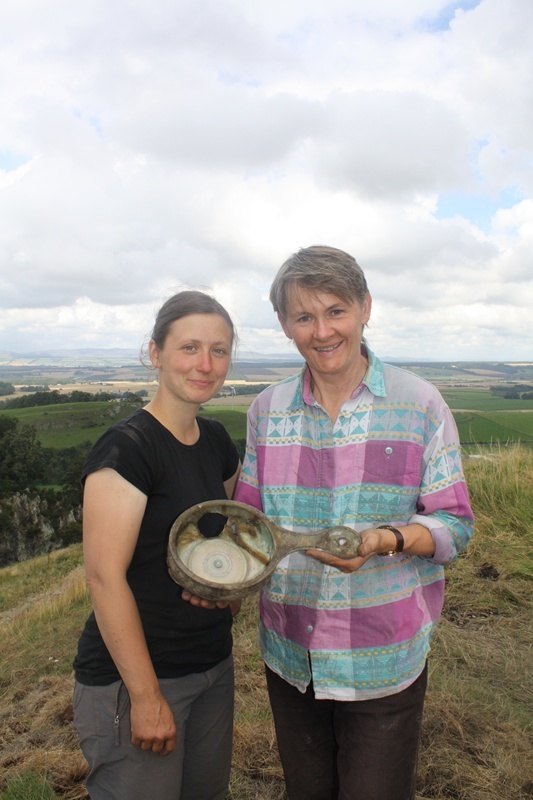A major new discovery by archaeologists working in Perthshire is set to rewrite early Scottish history.
The colossal and exquisitely-preserved Iron Age broch uncovered near Dunning is thought to have once been the seat of a Celtic chieftain.
Though just a fraction of the site has been excavated, the findings have already been hailed by the Scottish Government and could have “potentially far-reaching implications” for how we view our history.
The incredible discoveries already made in and around the structure are believed to date from very first contact between the Picts and the Roman Empire. They reveal evidence of trade between the two peoples from the outset, with a variety of high-value items from the continent drawn from the earth.
Behind the excavations once again has been a team from the Strathearn Environs and Royal Forteviot (SERF) project, which comprises the universities of Glasgow, Aberdeen and Chester and students and volunteers from across Scotland, Europe and North America.
The team has enjoyed a string of successes in recent years, the most notable of which was the discovery of an early Bronze Age burial at Forteviot in Perthshire, later a Pictish royal centre.
Within the 4000-year-old grave the archaeologists found a stunning bronze dagger and beautifully preserved flowers thought to be the earliest floral tribute ever discovered in the UK.
To the astonishment of the team, this latest excavation has proven to be even more significant, as the broch structure was found to be filled with evidence of early contact between the Picts and Romans.
The massively fortified dwelling, the preferred residence of the elite during Roman times, is the first of its kind to be discovered in the Scottish Lowlands in around 100 years.
Situated at the top of a hill to offer occupants 360-degree views of the surrounding countryside, the broch’s drystone walls stand in excess of two metres high and five metres thick.
The SERF team uncovered evidence that after the broch was destroyed by fire, the Picts built a palisaded fortress directly on top of the site, which was likely occupied by a Pictish warlord.
Stephen Driscoll, professor of historical archaeology at Glasgow University and director of the SERF project, said: “There can be no doubt that we have located one of the major centres of Pictish power from the 1st and 2nd centuries. The scale of the architecture is colossal and the tower-like structure would have visually dominated its surroundings.
“It’s not unreasonable to see this as a seat of a Celtic chieftain, who collected a wide range of luxury objects from the Roman world perhaps through trading with the Romans or possibly even serving in the Roman army.
“The artefacts are of particular interest as they date to the time of the first contact with the Roman world and offer numerous clues to how the Picts might have begun their interactions with the Roman Empire.
“This is the best example of an Iron Age Roman site being reoccupied by the Picts. We have long suspected that this happened, but now we can examine the Picts’ relationships with the Romans in much more detail.”
Cabinet Secretary for Culture and External Affairs Fiona Hyslop described the wealth of information coming from the excavation as “incredible”.
“It has potentially far-reaching implications for how we view our history,” the MSP said. “To be able to reveal such an exceptional site that holds impressive architecture, artefacts and has been used and reused over generations to give us new understanding of Celts, Picts and Romans is outstanding and I would like to congratulate the team for their hard work and dedication.”
The finds from the broch’s interior include a wide range of Roman trade goods in excellent condition, including a bronze patera, a glass vessel, an unusual lead bowl, bangles of coloured glass and bronze and beads of glass and amber, as well as fragmented objects of bronze, iron and lead.
The team also uncovered characteristic native artefacts including a decorated stone lamp, a spindle whorl and weaving comb.
Professor Driscoll added: “The majority of the known Lowland brochs were excavated poorly by antiquarians or were not as well preserved as the items we’ve uncovered.
“The discovery of such items is particularly valuable as it will allow this high-quality material to be examined in a disciplined manner.”
